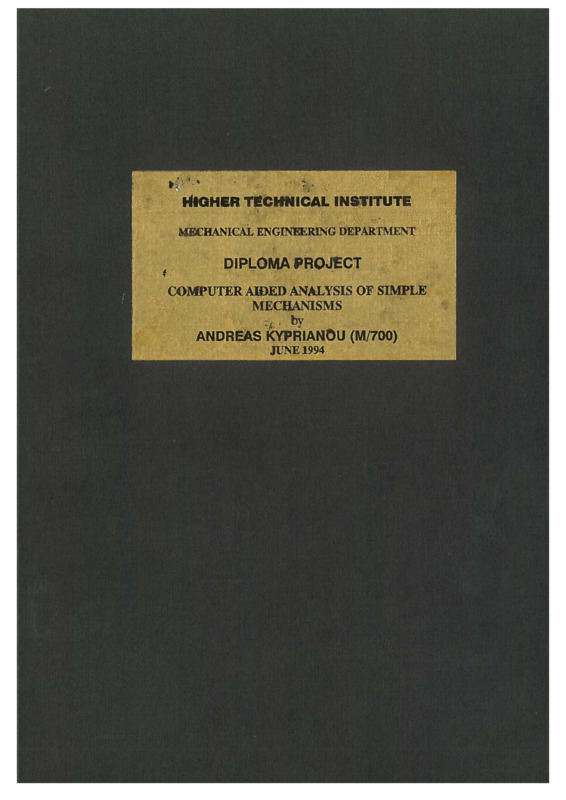-
Τίτλος
-
Computer aided analysis of simple mechanisms
-
Θέμα
-
Mechanical engineering
-
Computer aided learning
-
Δημιουργός
-
Kyprianou, Andreas
-
Πηγή
-
Higher Technical Institute
-
Το πλήρες κείμενο είναι διαθέσιμο από το Υπουργείο Ενέργειας, Εμπορίου Βιομηχανίας και Τουρισμού.
-
Εκδότης
-
Library of Cyprus University of Technology
-
Ημερομηνία
-
1994
-
Συνεισφέρων
-
Demetriou, Paraskeva
-
Δικαιώματα
-
Απαγορεύεται η δημοσίευση ή αναπαραγωγή, ηλεκτρονική ή άλλη χωρίς τη γραπτή συγκατάθεση του δημιουργού και κάτοχου των πνευματικών δικαιωμάτων.
-
Μορφή
-
pdf
-
Γλώσσα
-
en
-
Τύπος
-
text
-
Αναγνωριστικό
-
MED0390
-
Σύνοψη
-
The introduction of this work is rather philosophical than an engineered text or computer programming text. In briefly explains how the approach to the project had be done and gives an overview of what will be followed.
Adopting the idea that when solving a problem (or defining a statement or studying etc.) start from the general statements and then proceed to the specific areas, had guided me to play a double role. That of the mechanical engineer and that of the programmer.
Taking the part of the mechanical engineer is the man/woman thar will be the final user of what the programmer will produce. He/she either be familiar or not with computers.
The mechanical engineer has in mind what a mechanism is and how to do the calculations as far as the linkage concern. Very general a mechanical engineer knows what a mechanism is and even better what is simple mechanism and he /she is called to carry out some calculations fo it (Either for synthesising or analising).
Moving to the programmer's point of view the below parallelism can be done. In this case the programmer can be thought as the businessman that must study the market to find a need. For the purpose of this project need can be considered the title of the project and what the program is expected to do are the parameters that will define the success of the product in the market.
After the research mentioned above, the programmer must know the theory hided and the equations governed the simple mechanisms ( acceleration, velocity, position). Here is where engineering perception interlinks with the programming perception.
Realising this general statement enforced me to organised the project in chapters as explained below.
CHAPTER 1: Is an independent chapter describing the world of mechanisms and their application and uses nowadays.
CHAPTER 2, 3, 4: Are being undertaken with the kinematic analysis of simple mechanisms.ln chapter two intication is done on how the approach of graphical synthesis is done.
Chapter 2: Position analysis.
Chapter 3: Velocity analysis. Chapter 4: Acceleration analysis.
CHAPTER 5: Starts with a synopsis of what had been predecessised in chapters 2, 3,4 and explains the connection with a computer language. Note that in this chapter an introduction Visual Basic is done.
CHAPTER 6:Gives an overall conclusion of the work and a suggestion for posiible future expansion of this program.
Finally, in loose notes the manual and coding of this pogram is presenting
 MED0390.pdf
MED0390.pdf 

